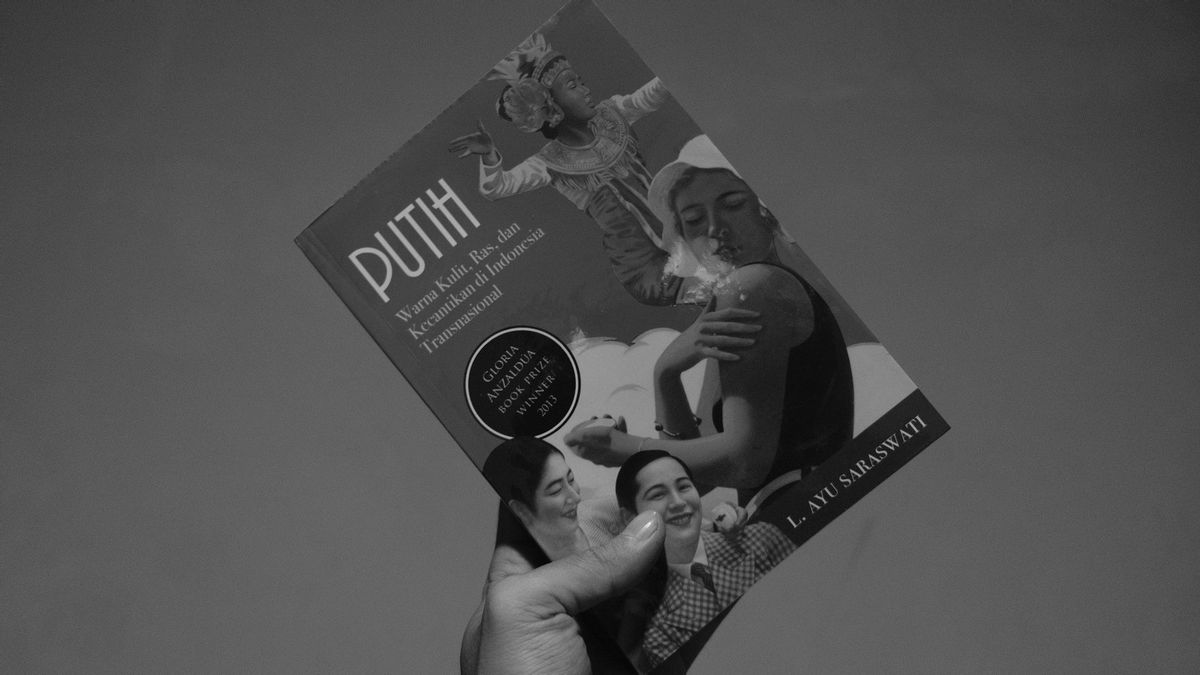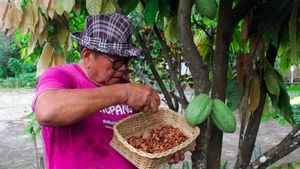JAKARTA - It may be that in Bumi Nusantara, the narrative of beauty has never changed from the past. White skin has always been exalted as the true symbol of beauty. On the other hand for blacks.
If traced, this kind of view has happened a long time ago. Not only in Indonesia, but in various countries around the world. Also the United States. In a more severe level, this condition provokes discrimination. Coloring labeling. There are mentions of Black, Item, Negro, and various other classifications.
For that, many women try to beautify themselves, meet these beauty standards in various ways. The most common are cosmetics and skin care.
That is reality. L. Ayu Saraswati, in a book entitled White: Skin Color, Race, and Beauty in Transnational Indonesia could be an interesting reading this week. In the book, Saraswati describes many important things in this standardization.
WhiteIn the book, Saraswati explores the dominance of white skin as a symbol of beauty. Readers are invited to open their minds by presenting racial history that has not only happened in the western world, but also in the archipelago for a long time.
In a neat way, the owner of the book displays a writing flow that makes the reader fully understand the problems of this view. Saraswati tells of the grandeur of white people from time to time, starting with a white form that refers to the poetry of the Ramayana epic.
Saraswati continues her story to the colonial era, the Japanese era, to the emergence of beauty products. Since then, with the support of print media advertisements, the view of white grandeur has grown stronger.
The first part, namely the chapter entitled Beauty According to the Ramayana Epic. In this section, the Indian epic, the Ramayana, which was adapted by the Javanese at the end of the ninth century, becomes an important document to distinguish between white and black colors.
Saraswati explained, the Ramayana epic has depicted the majesty of white skin with Sita's beauty adoration, which is described as having a white face, bright and radiant. The proof, can be seen from a fragment of the Ramayana story, when Rama - the main character - remembers his wife Sita.
Rama revealed, "My memories of your sweet face come to life because of the sight of a deer. The elephant reminds me of your grace, the moon of your bright face, Ah, I am overpowered by your beauty," it is written on page 43.
In this story, the brightness of Sita's skin is likened to a full moon. In contrast to the depiction of the dark-skinned Ravana character, which implies negative correlations, such as the impression of evil and suffering. "Her dark skin made her appear like a rolling cloud of death," reads page 50.
The second part, the chapter entitled The White of the Colonial Age. Something that needs to be understood is that the standardization of white skin color as a symbol of beauty in Indonesia is growing. One of the times when the white Caucasians or Europeans developed in Indonesia, was none other than when the Dutch began to control the Dutch East Indies.
Throughout the 17th and 18th centuries, European accounts of testimony stereotyped the Indies natives as lazy and stupid. "Throughout the colonial period, light or white skin color indicated a higher status."
"This is reflected in the memoir of an Indo woman who tells how during her childhood in the Indies, students and teachers looked up to European students who were white and bright in school."
Therefore, the romance that spread throughout the Indies was the position of the Dutch who were very powerful as colonizers, able to frame the idea that Caucasian women were symbols of beauty within the framework of white supremacy.
Part Three, White Age Japan. If viewed from history, a small community of Japanese people existed in Batavia in the 17th century or maybe even earlier. However, Japanese power over Indonesia in 1942 gave birth to a new perception of white skin as a symbol of beauty.
Due to the Japanese occupation, Europeans or Indo-Europeans who previously considered themselves to be in a special position, when Japan entered, were in the lowest ranks. In the past, those with mixed Indo-European blood who previously concealed their Indonesian origins now claim their Indonesian background and throw away their European status.
The beauty that was once held by Caucasians has turned into the beauty of Japanese women and Indonesian women. In fact, it was propagated through the printed media at that time. This is evidenced by the rubrics in Djawa Baroe such as Poetri Nippon, Bintang Film Nippon, and Poetri Indonesia which is Tjantik Molek.
Part Four, Indonesian Beauty to the Present. In its development, beautiful white is only attached to women. Whereas in men, skin color strata are almost not applicable. Therefore, many women are competing to get white skin by using a variety of skin whitening products.
"Of the 46 sources, only eight claimed to have never tried any skin whitening products. However, these eight women admitted that they had seen other women wearing them and were urged to try them but did not want to, ”wrote on Page 200.
This makes us think again about how we cannot easily ignore the relationship between the white beauty of Indonesia and the global white supremacy. Beautiful white is only attached to women, not men. Form a feminine character.
For example, in postmo beauty advertisements that only show women as advertising objects to appear beautiful and clean. So it can be a sensitive issue for some groups, for example feminists who crave equality.
Detail:
Book Title: White: Skin Color, Race, and Beauty in Transnational Indonesia
Author: L. Ayu Saraswati
First published: 2013
Issuer: Left Margin
Number of Pages: 254
The English, Chinese, Japanese, Arabic, and French versions are automatically generated by the AI. So there may still be inaccuracies in translating, please always see Indonesian as our main language. (system supported by DigitalSiber.id)









